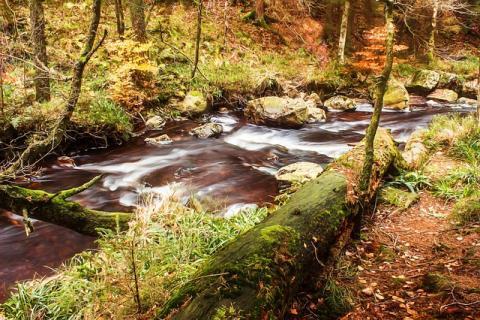
Long before the compass was created by humans, people used nature to find their way around the lands and across the waters. Sailors still use a special instrument called a sextant to navigate the seas. The sextant is designed to measure the angle of the stars above the horizon to find accurate direction and position in terms of the latitude and longitude. Before the sextant was used, Vikings used Sun Stones similar to a sundial that helped them maintain a proper course.
The stars not only help you find your way on the waters, but they will also guide you on the land. These 5 methods work pretty well and they’ve all been used for a very long time. Whether you are camping, traveling, or hiking, at least one of these methods should get you back on the right track if ever you lose your way. I come from a family of sailors, hunters, and fisherman, so these little tips have been things I have heard throughout my childhood.
What Is Nature’s Compass?
Nature is a living compass. All of nature has a story to tell and when you know what you’re looking for you will know little bits of the story. The side of the sky in which the sun rises and sets on a daily basis will help you find your direction and in some places, you will know East and West based on which way the clouds are drifting. Once you know what to look for and how to find it you will always know the directions. You can look to the sun, the stars, the clouds, the trees, and shadows to find the four directions.
Trees/Plants
- Moss almost always grows on North-facing rocks and trees. This is because it thrives where there is little sunshine.
- Deciduous trees and Evergreen trees each have their favorite spots in the forest. Deciduous trees prefer to grow on the south side of hills, while the Evergreens favor the North side.
So keep your eye out for evergreens, deciduous, and fallen trees containing moss and you may be lucky enough to know which way to roam.
The Sun
No matter where on Earth you are, the sun rises in the East and it sets in the West. Even if it is off just slightly you can find the general direction by watching the sun rise/set.
Shadows
I learned this method when building a sundial. Put a stick into the ground, straight up and down in the vertical position and use a rock or something small to mark where the very tip of the shadow is cast from the sun and stick. Be sure to use flat ground, free of debris and brush for more accuracy. Now that you have your first mark, wait about 10-15 minutes and with the sun’s movement you will see the new point that the shadow casts – mark this one as well. The line that would go directly between the two shadow points should be running East to West and from here you can get your direction.
The Clouds
You will have to check the statistics for your area on this one, but the clouds usually move in a West-to-East direction. This method would be more of a last resort, since there is a possibility that the clouds can shift direction.
The Stars
As I mentioned above the stars were and still are used by sailors to navigate the sea using the sextant. You can also use the stars while landlocked as well. The Polaris, also known as The North Star, is always the brightest star in the sky and some people believe it is also the first star to light up the night. The North Star is actually the brightest star in the handle of the Little Dipper, so if you find the North Star you find the Little Dipper and vice versa.
As long as you are facing the North Star you’re facing the North.
Knowing how to find your way when you are lost, or maybe even just without a compass, is a really good skill to possess. Not all of these methods work as well for some people as they might for others, but they do all work and should at least be able to provide you a general direction. Becoming one with nature and staying in tune with it has many benefits to living and survival. Now, go outside and look at the sky and lock your position on the map!








